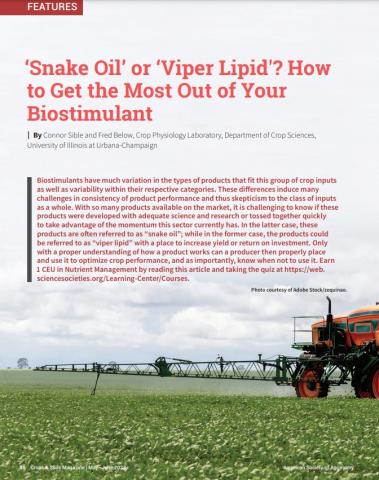Biostimulants have much variation in the types of products that fit this group of crop inputs as well as variability within their respective categories. These differences induce many challenges in consistency of product performance and thus skepticism to the class of inputs as a whole. With so many products available on the market, it is challenging to know if these products were developed with adequate science and research or tossed together quickly to take advantage of the momentum this sector currently has. In the latter case, these products are often referred to as “snake oil”; while in the former case, the products could be referred to as “viper lipid” with a place to increase yield or return on investment. Only with a proper understanding of how a product works can a producer then properly place and use it to optimize crop performance, and as importantly, know when not to use it

Article by Connor Sible and Fred Below from University of Illinois - view on the website
Recommended Content
Connected Content
Biostimulants are increasingly available and are now widely marketed to farmers. While the jury is still out on a definitive definition, most definitions of biostimulants explain that they should stimulate plant nutrition processes independently of the product’s nutrient content with the aim of improving one or more of the following characteristics: nutrient efficiency, tolerance to abiotic stress, and/or quality.
A range of products are commercially available that claim to enable more efficient nutrient uptake, allowing less nutrient to be applied as fertiliser.


Discussion
view Connor's LinkedIn post below...